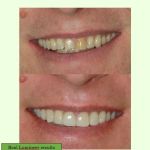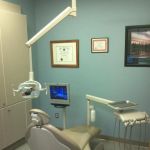- 1-understanding-tooth-enamel-thinning
- 2-common-causes-of-enamel-thinning
- 3-symptoms-and-effects-of-enamel-erosion
- 4-repair-options-for-thinned-enamel
- 5-personal-care-and-prevention-tips
Understanding Tooth Enamel Thinning
Tooth enamel is the hard, protective outer layer of your teeth that guards against decay and damage. When this enamel thins, teeth become vulnerable to sensitivity, cavities, and discoloration.
Recognizing enamel thinning early is crucial to preventing further dental complications.
Common Causes of Enamel Thinning
Enamel thinning can be caused by various factors including frequent consumption of acidic foods and beverages, aggressive brushing, acid reflux, and certain medical conditions. Additionally, teeth grinding and aging also contribute to enamel erosion.
Understanding these causes helps in targeting the root problem effectively.
Symptoms and Effects of Enamel Erosion
Common signs include increased tooth sensitivity, yellowing teeth due to dentin exposure, and rough or uneven tooth surfaces. Over time, enamel loss can lead to cavities and more serious dental issues if untreated.
Repair Options for Thinned Enamel
While enamel itself cannot regenerate, several repair options are available to protect and restore tooth function. Treatments like fluoride applications, dental bonding, veneers, and crowns can help rebuild enamel strength and appearance.
Professional dental care is essential to choose the best treatment tailored to individual needs.
Personal Care and Prevention Tips
Maintaining good oral hygiene, using soft-bristled toothbrushes, limiting acidic foods, and regular dental checkups play key roles in preventing enamel thinning. Protective products such as toothpaste with fluoride also strengthen enamel.
For expert advice and top-quality dental care products, visit Dentistry Toothtruth to support your enamel health and smile confidently.







 Springfield Dentures and Implants4.0 (69 review)
Springfield Dentures and Implants4.0 (69 review) A Z Dental3.0 (41 review)
A Z Dental3.0 (41 review) Forest Ridge Family Dentistry5.0 (175 review)
Forest Ridge Family Dentistry5.0 (175 review) Motto Clear Aligners0.0 (0 review)
Motto Clear Aligners0.0 (0 review) Beck Dental Center4.0 (34 review)
Beck Dental Center4.0 (34 review) Celebrate Dental & Braces4.0 (724 review)
Celebrate Dental & Braces4.0 (724 review) The Importance of Oral Health Education During Pregnancy for a Healthy Pregnancy
The Importance of Oral Health Education During Pregnancy for a Healthy Pregnancy Best Tips for Brushing Your Teeth Properly for Healthy Gums: Essential Techniques for Oral Health
Best Tips for Brushing Your Teeth Properly for Healthy Gums: Essential Techniques for Oral Health Why Skipping Dental Checkups Can Lead to Bigger Oral Health Problems
Why Skipping Dental Checkups Can Lead to Bigger Oral Health Problems Advantages of Porcelain Dental Restorations
Advantages of Porcelain Dental Restorations How Can Diabetes Cause Tooth and Gum Problems? Preventing and Managing Oral Health Issues
How Can Diabetes Cause Tooth and Gum Problems? Preventing and Managing Oral Health Issues Healthy Habits for Promoting Good Oral Health and Hygiene: Tips for a Healthy Smile
Healthy Habits for Promoting Good Oral Health and Hygiene: Tips for a Healthy Smile